Just add water to these nanoparticles and treat brain cancer
Freeze-dried gene therapy system avoids virus, potential complications.
Jul 6th, 2011
Read more
Freeze-dried gene therapy system avoids virus, potential complications.
Jul 6th, 2011
Read moreMany cell types in higher organisms are capable of implementing directed motion in response to the presence of certain chemical attractants in their vicinity. A team at the Center for NanoScience (CeNS) at Ludwig-Maximilians-Universitaet (LMU) Muenchen has developed a novel technique to expose an ensemble of living cells to rapidly varying concentrations of chemoattractants.
Jul 6th, 2011
Read more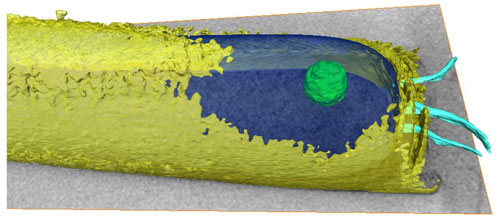 Energy-storage capacity of ancient microorganism could lead to power source for synthetic cells.
Energy-storage capacity of ancient microorganism could lead to power source for synthetic cells.
Jul 6th, 2011
Read moreThe U.S. Environmental Protection Agency (EPA), as part of its Science to Achieve Results (STAR) program, is seeking applications proposing to conduct research necessary to identify, develop and demonstrate novel and innovative treatment technologies and approaches for small public drinking water systems.
Jul 6th, 2011
Read more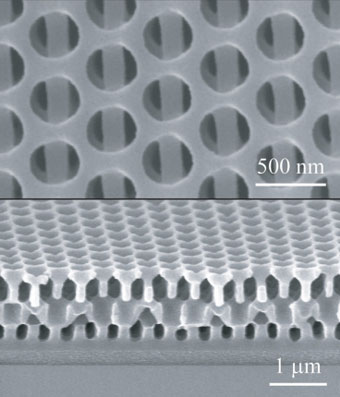 The making of three-dimensional nanostructured materials - ones that have distinctive shapes and structures at scales of a few billionths of a meter - has become a fertile area of research, producing materials that are useful for electronics, photonics, phononics and biomedical devices. But the methods of making such materials have been limited in the 3-D complexity they can produce. Now, an MIT team has found a way to produce more complicated structures by using a blend of current "top-down" and "bottom-up" approaches.
The making of three-dimensional nanostructured materials - ones that have distinctive shapes and structures at scales of a few billionths of a meter - has become a fertile area of research, producing materials that are useful for electronics, photonics, phononics and biomedical devices. But the methods of making such materials have been limited in the 3-D complexity they can produce. Now, an MIT team has found a way to produce more complicated structures by using a blend of current "top-down" and "bottom-up" approaches.
Jul 6th, 2011
Read more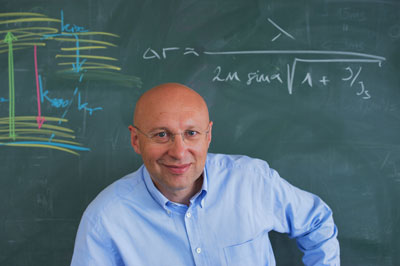 Prof. Dr. Dr. h. c. Stefan Hell of the Max Planck Institute for Biophysical Chemistry in Goettingen is to receive the 2011 Koerber European Science Prize endowed with 750,000 euros for his pioneering discoveries in the field of optics.
Prof. Dr. Dr. h. c. Stefan Hell of the Max Planck Institute for Biophysical Chemistry in Goettingen is to receive the 2011 Koerber European Science Prize endowed with 750,000 euros for his pioneering discoveries in the field of optics.
Jul 6th, 2011
Read moreA University of Southampton nanoscientist is working on a new microsystem for more efficient testing of pharmaceutical drugs to treat diseases such as cystic fibrosis, MG (myasthenia gravis) and epilepsy.
Jul 6th, 2011
Read more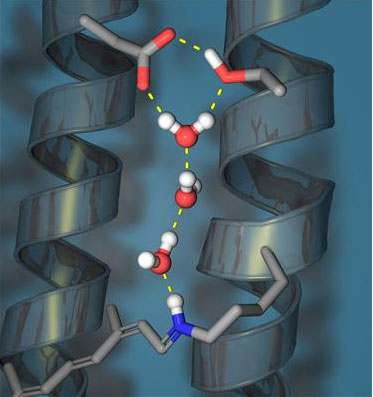 Researchers from the Ruhr-Universitaet-Bochum (RUB) Department of Biophysics of Prof. Dr. Klaus Gerwert have succeeded in providing evidence that a protein is capable of creating a water molecule chain for a few milliseconds for the directed proton transfer. The combination of vibrational spectroscopy and biomolecular simulations enabled the elucidation of the proton pump mechanism of a cell-membrane protein in atomic detail. The researchers demonstrated that protein-bound water molecules play a decisive role in the function.
Researchers from the Ruhr-Universitaet-Bochum (RUB) Department of Biophysics of Prof. Dr. Klaus Gerwert have succeeded in providing evidence that a protein is capable of creating a water molecule chain for a few milliseconds for the directed proton transfer. The combination of vibrational spectroscopy and biomolecular simulations enabled the elucidation of the proton pump mechanism of a cell-membrane protein in atomic detail. The researchers demonstrated that protein-bound water molecules play a decisive role in the function.
Jul 6th, 2011
Read more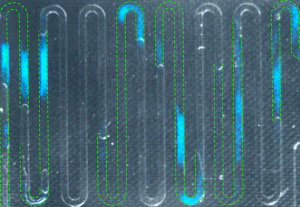 The intense energy released by collapsing bubbles in a microfluidic chip could help speed up chemical reactions.
The intense energy released by collapsing bubbles in a microfluidic chip could help speed up chemical reactions.
Jul 6th, 2011
Read more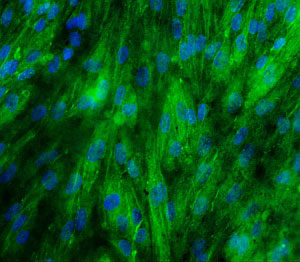 A research team led by Daniele Zink and Jackie Y. Ying at the A*STAR Institute of Bioengineering and Nanotechnology has now developed membrane materials and coatings that are suitable for human proximal tubule cells growth and differentiation by modifying the surface of established materials and synthesizing novel materials.
A research team led by Daniele Zink and Jackie Y. Ying at the A*STAR Institute of Bioengineering and Nanotechnology has now developed membrane materials and coatings that are suitable for human proximal tubule cells growth and differentiation by modifying the surface of established materials and synthesizing novel materials.
Jul 6th, 2011
Read more Researchers characterize biomechanics of ovarian cells in mice according to their phenotype at early, intermediate, and late-aggressive stages of cancer.
Researchers characterize biomechanics of ovarian cells in mice according to their phenotype at early, intermediate, and late-aggressive stages of cancer.
Jul 5th, 2011
Read more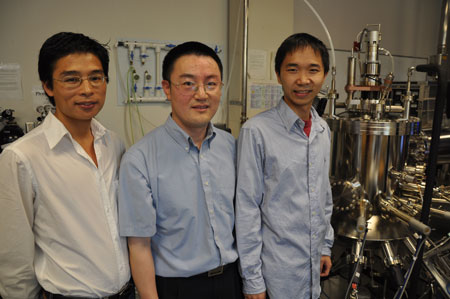 A team led by a professor at the University of California, Riverside Bourns College of Engineering has made a discovery in semiconductor nanowire laser technology that could potentially do everything from kill viruses to increase storage capacity of DVDs.
A team led by a professor at the University of California, Riverside Bourns College of Engineering has made a discovery in semiconductor nanowire laser technology that could potentially do everything from kill viruses to increase storage capacity of DVDs.
Jul 5th, 2011
Read more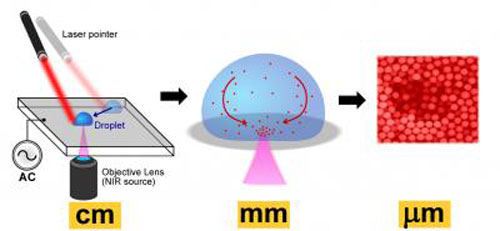 Researchers are developing new technologies that combine a laser and electric fields to manipulate fluids and tiny particles such as bacteria, viruses and DNA for a range of potential applications, from drug manufacturing to food safety.
Researchers are developing new technologies that combine a laser and electric fields to manipulate fluids and tiny particles such as bacteria, viruses and DNA for a range of potential applications, from drug manufacturing to food safety.
Jul 5th, 2011
Read more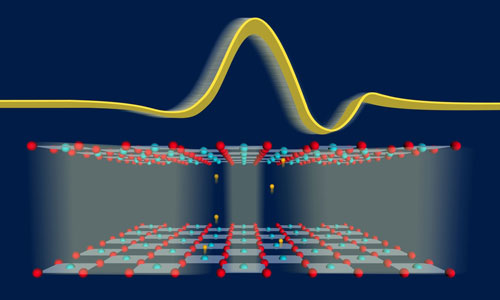 A high-temperature superconductor can now be switched on and off within a trillionth of a second - 100 years after the discovery of superconductivity and 25 years after the first high-temperature superconductor was.
A high-temperature superconductor can now be switched on and off within a trillionth of a second - 100 years after the discovery of superconductivity and 25 years after the first high-temperature superconductor was.
Jul 5th, 2011
Read moreJapanese scientists report on a unique 'ubiquitous element strategy' for synthesizing industrially important electronic, thermionic, and structural materials using naturally abundant elements. This strategy aims to overcome the 'rare-element crisis' that was triggered by increasing demand for such elements as lithium, used in batteries, and dysprosium for Ne-Fe-B permanent magnets.
Jul 5th, 2011
Read moreThe catalogue currently includes 53 Spanish nanotechnology companies.
Jul 5th, 2011
Read more